You’ve invested in an automated pet water monitoring system, but you’re probably not getting the most out of it. Most pet owners make critical mistakes when setting up their devices, leading to false alerts, missed health warnings, and unreliable data about their pet’s drinking habits. The difference between a frustrating gadget and a game-changing health tool comes down to three specific strategies that transform how effectively you can monitor your pet’s hydration.
Optimize Sensor Placement and Water Level Detection
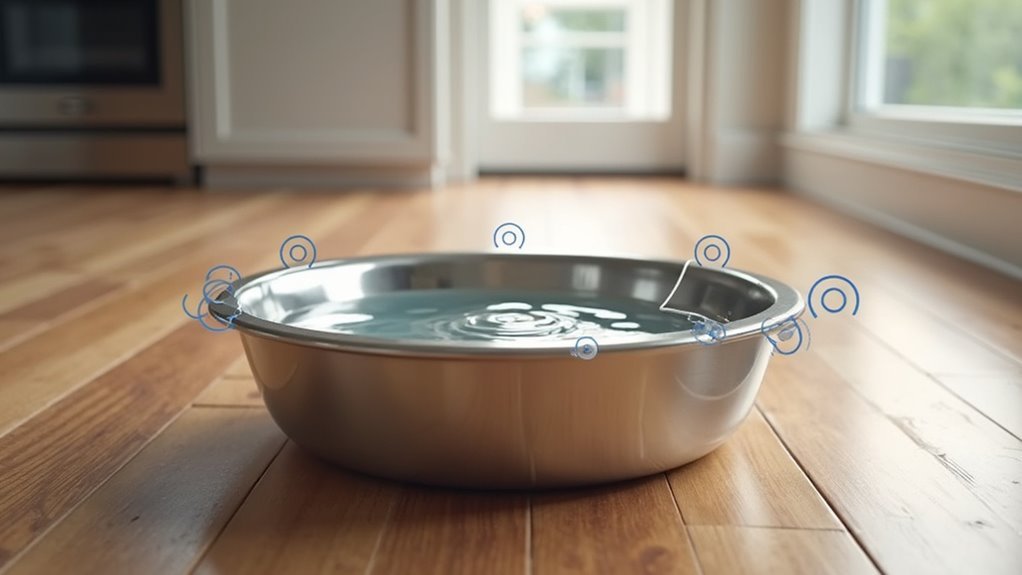
When setting up your automated pet water monitoring system, you’ll want to position sensors at the precise height where they can detect low water levels without triggering false alarms from splashing or drinking activity.
Install sensors in areas with proper airflow to prevent humidity interference that affects water quality readings.
Consider implementing dual-probe systems—one sensor indicates when the water bowl is full, while another triggers when it’s empty. This setup helps you determine whether your pet’s water consumption patterns are normal.
Clean sensor probes regularly to prevent mineral buildup that causes inaccurate readings, especially with hard water.
Test your sensors periodically and recalibrate when necessary to guarantee reliable water level monitoring and timely alerts.
Configure Real-Time Alerts and Threshold Management
Once your sensors are properly positioned, you’ll need to establish intelligent alert systems that notify you when your pet’s water consumption deviates from normal patterns.
Set up ThingsBoard with a 500mL daily threshold to trigger alerts when water supply levels indicate low intake. Configure automatic email notifications to reach caregivers immediately when consumption falls below established limits. Your sensors transmit real-time data through MQTT communication, ensuring prompt detection of concerning patterns.
- Never miss critical moments – Instant alerts mean you’ll catch dehydration before it becomes dangerous for your beloved companion
- Sleep peacefully knowing – Automated monitoring watches over your pet’s water consumption even when you’re away or resting
- Prevent heartbreaking health issues – Early detection through threshold management helps avoid costly veterinary emergencies and suffering
Regular threshold adjustments optimize accuracy based on drinking patterns.
Maintain System Performance Through Regular Calibration
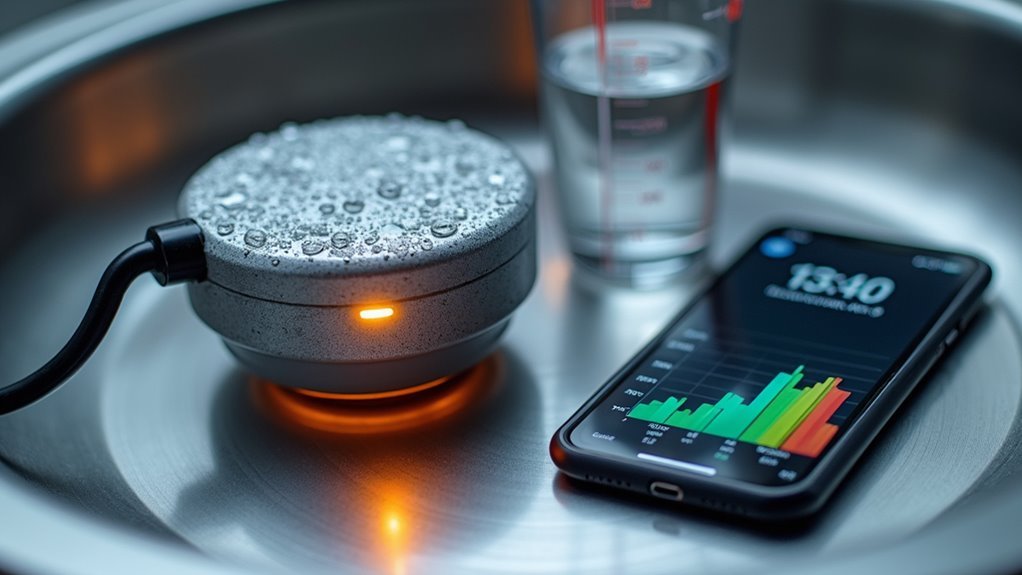
Although your automated pet water monitoring system provides reliable oversight, it requires consistent maintenance to deliver precise readings and dependable performance.
Regularly check your water level sensors for accurate readings, adjusting their calibration when detected levels don’t match the physical pet water levels in the bowl. Clean dip probes and sensors periodically to prevent oxidation and maintain reliable conductivity, as residue affects performance.
Monitor timer settings controlling pump activation, ensuring they align with average bowl fill times to prevent overflow or underfilling. Test MKR1000 and ThingsBoard communication using MQTT to confirm accurate data transmission.
Update threshold settings for low consumption alerts based on your pet’s drinking habits to maintain relevant notifications.
Frequently Asked Questions
How Do I Monitor My Dogs Water Intake?
Use a smart water fountain that tracks consumption and sends alerts when intake drops below safe levels. Review daily data patterns to spot health concerns and set up notifications for real-time monitoring.
Are Automatic Water Dispensers Good for Dogs?
Yes, automatic water dispensers are excellent for dogs. They’ll guarantee your pet stays hydrated with fresh, filtered water throughout the day. You’ll appreciate the convenience and your dog’s improved health.
How Does an Automatic Pet Waterer Work?
Your automatic pet waterer uses copper wire sensors that detect water levels in the bowl. When sensors aren’t submerged, they activate a pump that refills the bowl from a reservoir, ensuring your pet always has fresh water available.
Can You Have a Pet Water Monitor?
You can absolutely have a pet water monitor. These devices track your pet’s drinking habits, send alerts when consumption drops below thresholds, and notify you about low water levels automatically.

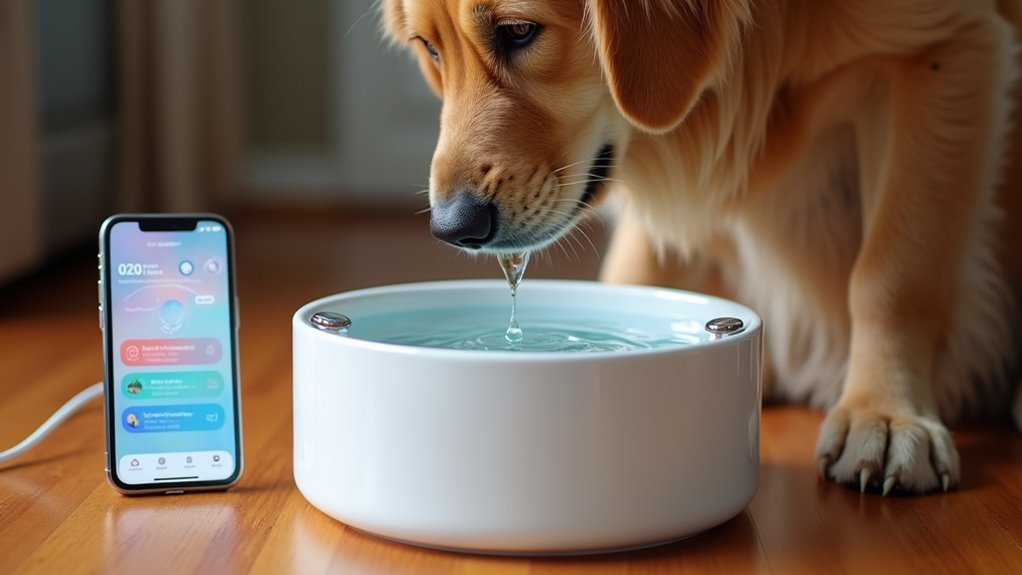
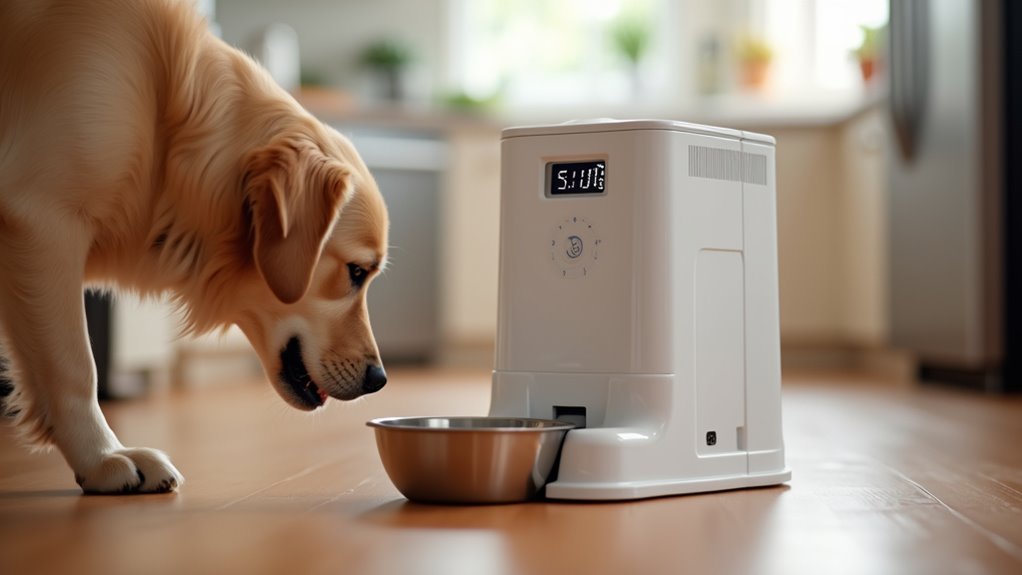
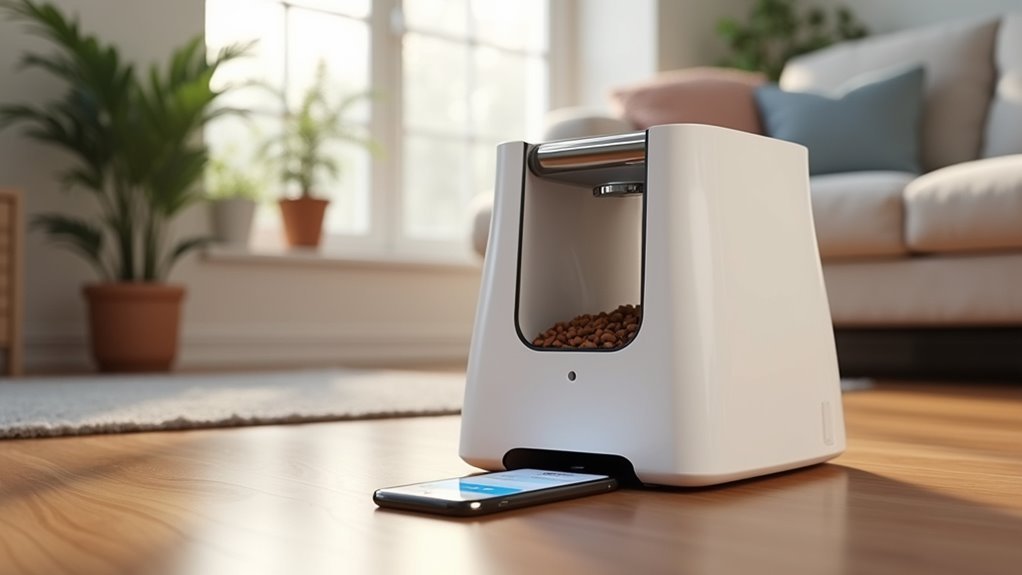
Leave a Reply